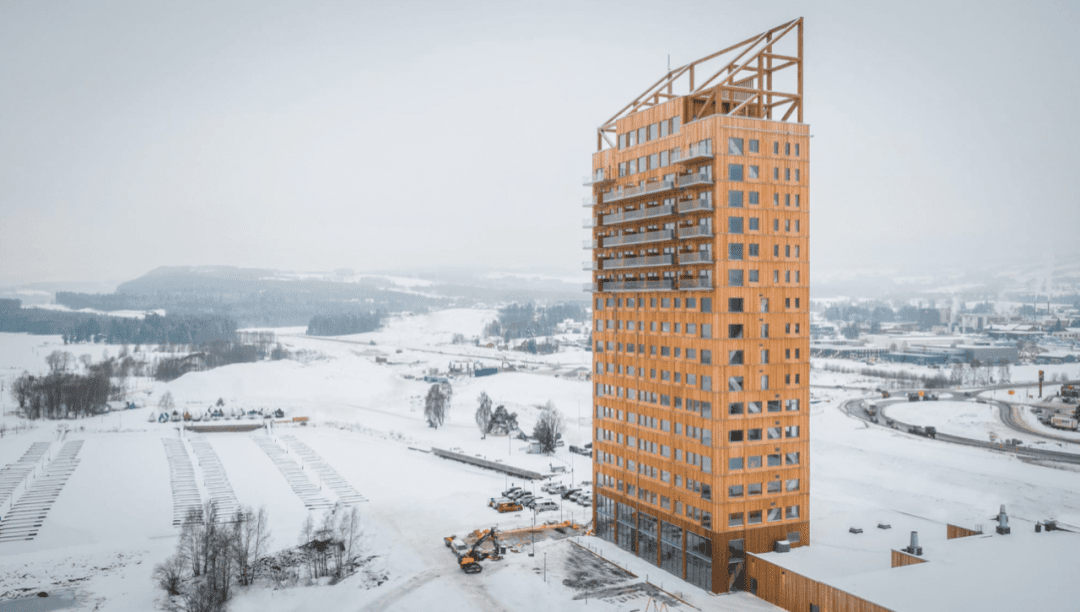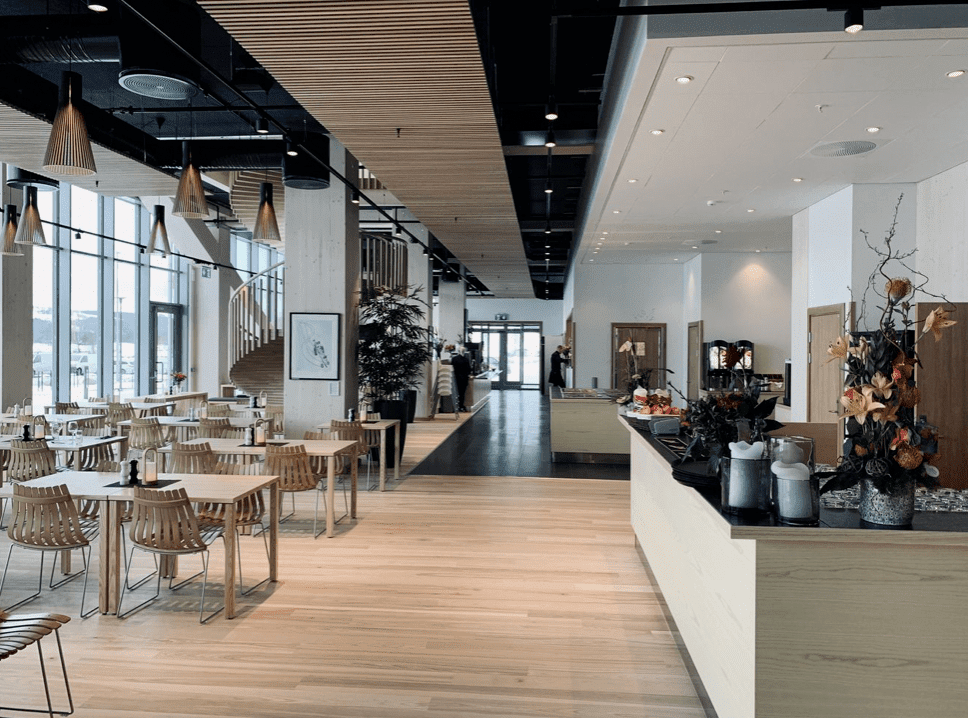Norway's third tallest skyscraper also has the most unique architecture: it is made entirely of wood. The building is called Mjøstårnet - meaning Mjosa's Tower - and is located in Brumunddal, a small Norwegian industrial town on the edge of Lake Mjosa. The town is known for its role in the timber industry, making it an ideal location to build the tallest wooden skyscraper in the world.
Built with local pine, harvested directly from its backyard, Mjostarnet is the pinnacle of timber construction. The building features 18 floors, a hotel, office space, a pool and a restaurant, and stands nearly 300 feet tall. Although it is one-tenth the size of the world's largest skyscraper (in Dubai), Mjostarnet is a feat for a country where the average size of buildings is three stories.

Wooden details throughout Mjøstårnet
Mjostarnet is made of 100% different types of engineered wood and is as strong as steel. All facilities, including the elevator shaft, are of complete wood construction. Glued laminated timber stands for glued laminated timber and consists of timbers that are bonded together with a weatherproof adhesive. Glulam can be produced in different forms, including the large blocks used to form the main load-bearing part of skyscrapers. By engineering it in this way, it can make the wood denser and stronger than ordinary wood. Because of this, glulam provides the same strength and stability to wooden skyscrapers as steel does to classic architectural structures.
The use of bio-based building materials has many benefits, especially in ecological terms. On average, the production of concrete and other common building materials accounts for about 28 percent of carbon emissions, according to a study conducted in 2018. The chemical and thermal processes involved in producing concrete alone account for 8% of global emissions.
Not only is the production of these materials unsustainable, but they also have a low chance of being recycled. It is much more economical for companies to just produce more product rather than recycle it. As a result, most landfills are filled with unused concrete and steel from demolished buildings.
In contrast, the production of glulam and cross-laminated timber stores CO2, rather than increasing CO2 emissions. Often, especially in places like Scandinavia, the wood can be sourced and produced locally. This eliminates the large emissions that typically occur when transporting construction materials such as concrete and steel to the construction site. The invention of cross-laminated timber and glulam provides the construction industry with a unique and sustainable alternative to produce stable and structurally sound buildings.

Wood trends are taking hold in the construction industry. Especially in Scandinavia. After the completion of Mjøstårnet, the architects recognized the potential benefits to the industry of bio-based building materials as an alternative to traditional materials.
The impact of pollution on the atmosphere is becoming more and more apparent. Many cities have recognized this and are trying to build environmental awareness. In addition to the intentional use of sustainable products for construction, in places such as Norway, Norwegian law requires the replanting of harvested wood. Thus providing a new source of growth for future generations and making wood a reliable and reusable resource.
Engineered wood may soon become more popular as many cities focus on reducing their carbon footprint and producing more sustainable and "eco-friendly" products. Places like Norway and Scandinavia have architects designing their next big wooden skyscraper or even entire developments.
Developers in Stockholm, Sweden, have proposed a development built entirely of wood. This includes a variety of wooden skyscrapers covering 19 city blocks, including stores, restaurants, offices and apartments. The use of wood in modern urban construction may change the way we perceive them today. Forget the concrete jungle, wooden skyscrapers may soon become the new normal.

